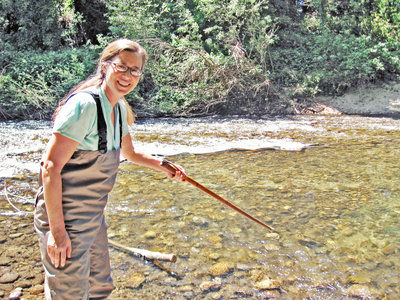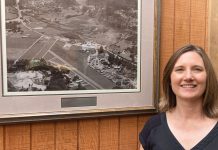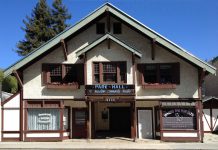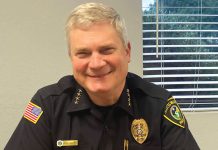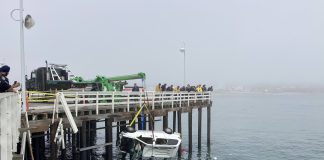If you do not know what you are looking for, you probably will not find it. I learned that recently as Kristen Kittleson, county fisheries resource planner, and I climbed down a rocky bank to the San Lorenzo River. Immediately she saw a group of lamprey and walked out into the water in her waders to point them out to me.
Lampreys, the river’s vampires, have a round, sucker-like jawless mouth, filled with rows of horny teeth and a rasp-like “tongue.” According to the California Museum of Paleontology, after “fastening on to living fish, lampreys rasp into the flesh and feed on the body fluids. A fish attacked by lampreys may be severely weakened or even killed.”
On the sunny shoals, Kittleson spied steelhead fry, as small as the nail on my little finger, darting through the water. As I said, I would have never seen them without her.
“This a perfect time of year to look for them,” she said.
To see them for yourself, join us May 21, when Kittleson will lead a watershed walk along the river in Henry Cowell Redwoods State Park.
Her work for the county includes watershed protection and conservation of steelhead trout and Coho salmon. One of her biggest projects has been the implementation of a new policy concerning large wood in streams and rivers.
The following is part of our recent conversation about our streams in the San Lorenzo Valley:
“If a citizen requested, the county would respond and cut up wood in streams, but large wood is very important to steelhead and Coho,” Kittleson explained. “Now we cut up less wood and leave more in the stream.
“I go out to the site and evaluate it along with a geomorphologist, who gives me technical advice,” she said. “Can this wood benefit the fish? Large wood in the water helps scour pool habitat, helps sort sediment and helps create spawning gravel. It also provides cover habitat where the fish can hide from predators in the summer time. In winter, it provides a high-flow refuge for young steelhead and Coho.
“Coho were believed extirpated in the 1980s, but then they showed up in Bean Creek in 2005. Young juvenile Coho salmon,” she added. “Coho has this three-year life cycle, so we might find them this year. The fish that were found in 2005 didn’t come back in 2008, but there’s another chance that we’ll see them this summer 2011.
“The county coordinates a multi-agency monitoring program. There will be sampling in the fall, but I’m not feeling very hopeful. Because in Scotts Creek on the north coast, which is one of our strongest watersheds for Coho, they had only three adults return. NOAA Fisheries runs a weir at that site, which monitors fish by capturing them as they’re moving upstream or downstream.
“Historically, these streams had a tremendous amount of wood in them. A lot of their form and function was built around large wood. Over the past 150 years, a tremendous amount of wood has disappeared from the systems, because of logging and land use.
“There is a culture of fear over large wood in streams, because it can lead to bank erosion, causing flooding and causing the river to meander. And because of that, our rivers look really nice, we still have the beautiful streams and trees, but they’re not functioning as well as they have historically, because they don’t have this large wood in them,” Kittleson said.
People are more comfortable with the English garden look than with natural habitat, she said. “Natural habitat looks very messy. We are trying to educate and encourage people to be OK with more large wood in the water, which will preserve our steelhead population and maybe get back our Coho.”
A Los Altos native, Kittleson received her graduate degree in conservation biology, with a focus on river and stream ecosystems, from the University of Michigan.
For the walk, she will take maps that show the distribution of steelhead and Coho in the county and discuss their life history. Exploring along the river, Kittleson will point out features which create habitat for fish and discuss the interconnectedness of the riparian area. The riparian ecosystem provides cooling shade for fish; supplies leaves and other food that feed the river; helps protect the stream banks; and provides a source of large wood.
If you are interested in this free watershed walk, please e-mail me for more information.
Carol Carson is a nature writer and naturalist who has been a docent at Henry Cowell Redwoods State Park, taught classes on Big Basin State Park for UCSC Extension, and organizes nature walks through a grant from the San Lorenzo Valley Water District. She can be reached at ca****@*********on.com.

